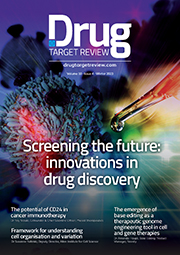Whitepaper: Isolation of stably transfected fluorescent cells with the S3™ Cell Sorter
Posted: 24 October 2016 | Bio-Rad Laboratories | No comments yet
The S3e Cell Sorter demonstrates its utility in performing high purity sorts of adherent cells that express intercellular florescent proteins…
Many fields of research, from immunology to neurobiology, require the isolation of cells based on extracellular or intracellular phenotypes. A way to accomplish this with exquisite accuracy is through fluorescence-activated cell sorting (Arun 2005, Maric and Barker 2004).
This technology allows researchers to isolate live cells based on the expression profile of one or multiple proteins of interest. Cells can be identified by using antibodies conjugated to fluorophores or by expressing fluorescently tagged proteins. Until recently, cell sorters were complicated, expensive, and typically required an experienced operator in a core lab setting. The S3 and S3e™ Cell Sorters, however, can be run by any researcher due to key automated features such as the AutoGimbal™ System and ProDrop™ Technology. Sorts can be carried out reliably and with high purity. Here we show that stably transfected GFP+ HEK 293 and RFP+ HEK 293 cells can be sorted to greater than 98% purity from a mixed population using the S3 Cell Sorter.
This whitepaper is restricted - login or subscribe free to access


Why subscribe? Join our growing community of thousands of industry professionals and gain access to:
- quarterly issues in print and/or digital format
- case studies, whitepapers, webinars and industry-leading content
- breaking news and features
- our extensive online archive of thousands of articles and years of past issues
- ...And it's all free!
Click here to Subscribe today Login here
Related content from this organisation
- Bio-Rad introduces mixed-mode resin for biomolecule purification
- New insights into the role of viral capsids in gene therapy safety
- The essential role of recombinant phage display antibody libraries
- Optimised antibody panels for CTC and rare cell enumeration
- Developing next generation non-replicative HSV-1 vectors for sustainable and more precise gene therapies
Related topics
Cell-based assays
Related organisations
Bio-Rad Laboratories








